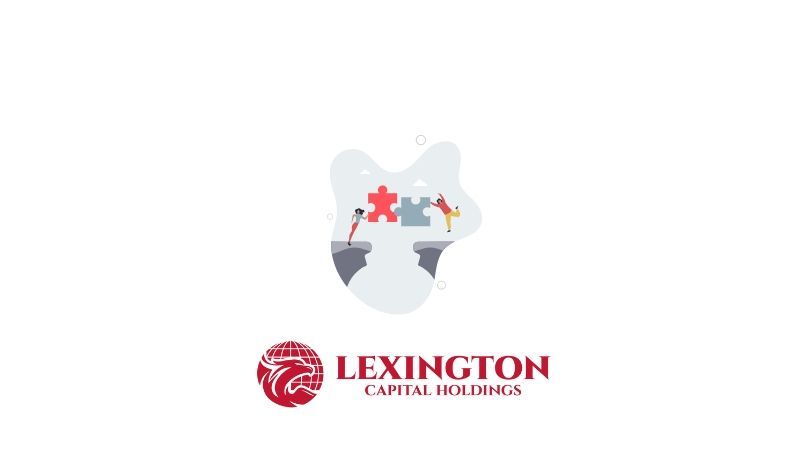Amazon Closes Its In-House Term Loan Business: Navigating New Financial Landscapes
Amazon Closes Its In-House Term Loan Business: Navigating New Financial Landscapes
Amazon's recent announcement about ending its in-house term loan service has stirred discussions within the entrepreneurial and financial sectors. The decision, confirmed via email to Fortune on March 6, highlights a significant shift in Amazon's approach to providing financial support to sellers on its marketplace. This move opens up a broader conversation about the future of financial assistance for small and medium-sized businesses (SMBs) on the platform. In this context, understanding the original service, its impact, the reasons behind its closure, and alternative financing options becomes crucial.
Understanding Amazon's Term Loan Service
Designed to empower SMBs, Amazon's term loan service facilitated business growth by offering short to medium-term loans. This initiative allowed sellers to expand inventory, explore new product lines, and enhance operational capacities, all within Amazon's ecosystem.
The Beneficiaries
The service targeted Amazon's marketplace sellers, leveraging intricate sales data and performance metrics to tailor financial solutions effectively. This initiative was especially beneficial for SMBs seeking growth but facing traditional financing barriers.
Operational Insight
Amazon's term loan service was praised for its simplicity and integration. Sellers received loan offers directly within their accounts, featuring competitive rates and flexible terms. The seamless repayment mechanism, deducting from sales proceeds, simplified financial management for busy entrepreneurs.
Closure and Strategic Shift
The closure of Amazon's term loan business, as detailed in communications to Fortune, is part of a strategic shift towards utilizing third-party financial services. Amazon's partnerships with entities like Lendistry, SellersFi, and Parafin signal a move to offer sellers a diversified range of financing options. This transition reflects an adaptation to the evolving needs of the marketplace and the broader financial ecosystem.
Lexington Capital Holdings: A Prime Financing Option
In the wake of Amazon's strategic shift, Lexington Capital Holdings emerges as a standout choice for business owners seeking alternative financing solutions. Renowned for making the financing process quick and seamless, Lexington Capital Holdings offers an array of programs tailored to the unique needs of business owners. Whether it's accessing capital for expansion, managing cash flow, or other financial needs, Lexington Capital Holdings positions itself as a reliable partner for businesses navigating their growth journeys.
Looking Forward
The discontinuation of Amazon's in-house term loan service marks a new chapter in financial services for online marketplace sellers. As Amazon collaborates with third-party lenders to provide financial support, the landscape offers a plethora of opportunities for businesses to explore alternative financing avenues. Lexington Capital Holdings, with its commitment to ease and flexibility, stands ready to assist businesses in this new era, offering diverse programs that cater to the various needs of today's entrepreneurs.
In sum, while Amazon's pivot opens up new avenues and partnerships in financial services, it also underscores the importance of selecting the right financial partner. With its comprehensive suite of financial solutions and customer-centric approach, Lexington Capital Holdings is poised to be a key player in supporting businesses through their growth phases, ensuring that the entrepreneurial spirit thrives in the dynamic online marketplace.

When you apply for business funding, your application goes through a critical stage—underwriting. This is where lenders evaluate risk and determine whether your business qualifies for financing, and under what terms. Understanding what underwriters look for can help you strengthen your application, avoid delays, and increase your approval odds.

Not every business enjoys a steady stream of income. For many companies—especially those in seasonal industries, contracting, or project-based work—revenue can shift dramatically from month to month. These ups and downs are normal, but they can make managing cash flow, payroll, and operating expenses challenging. At Lexington Capital Holdings, we understand that fluctuating revenue doesn’t mean instability—it just means you need the right financial tools to stay balanced and grow confidently.

The Challenge of Hyper-Growth For many startups, growth isn’t the problem—it’s managing it. Rapid scaling demands capital for hiring, marketing, technology, and operations. But too often, founders find themselves cash-strapped right when they need resources the most. Choosing the right financing strategy can be the difference between sustainable growth and burning out too soon.

When it comes to business financing, the terms you secure are just as important as the funding itself. Lower interest rates, flexible repayment schedules, and higher approval amounts can mean the difference between simply surviving and setting your business up to thrive. The good news? Business owners often have more negotiating power than they realize. At Lexington Capital Holdings, we’ve seen firsthand how preparation and strategy can help secure stronger terms. Here’s how you can do the same:

For many businesses, waiting on customer payments can feel like standing still when you’re ready to move forward. Delayed invoices, extended payment terms, or slow collections create cash flow gaps that make it harder to cover expenses, pay employees, or seize new opportunities. The truth is—even successful, profitable companies face this challenge. The key isn’t avoiding it, but managing it strategically with the right funding solutions

Securing business funding is a milestone—but the real impact comes from how you put that capital to work. Every dollar borrowed should fuel momentum, strengthen operations, and generate measurable returns. Unfortunately, too many businesses stop at “getting approved” and miss the chance to maximize their return on investment (ROI). At Lexington Capital Holdings, we believe funding isn’t just about access to capital—it’s about creating opportunity. Here’s how to ensure your financing delivers the highest ROI:

In today’s fast-paced business environment, standing out from the competition requires more than just great products and services—it takes strategy, timing, and smart financial decisions. One of the most overlooked tools in building and maintaining a competitive advantage is business financing. When leveraged correctly, financing doesn’t just help you “get by”; it can actually position your business to outpace competitors and capture new opportunities.

In business, surprises aren’t a matter of if—they’re a matter of when. Whether it’s a sudden equipment breakdown, an unexpected dip in sales, or a market shift that requires quick adaptation, unforeseen expenses can test even the most successful companies. The difference between thriving and struggling often comes down to how well you’ve prepared.

When most business owners hear the word debt, it sparks feelings of stress or risk. But here’s the truth—debt isn’t always a bad thing. In fact, when managed strategically, debt can become one of the most powerful tools to grow, stabilize, and scale your business. At Lexington Capital Holdings, we work with business owners every day who are navigating this very question: Is taking on debt the right move for me? Let’s break down the difference between “good” and “bad” debt so you can make informed financial decisions.

In today’s business world, financing options are everywhere—but choosing the right path can feel overwhelming. From traditional bank loans to alternative lending solutions, the fine print and fast-changing requirements often leave business owners spending more time deciphering funding terms than actually running their businesses. That’s where the value of a dedicated funding advisor truly shines. At Lexington Capital Holdings, we’ve seen firsthand how personalized guidance can transform the funding experience for business owners of all sizes.

